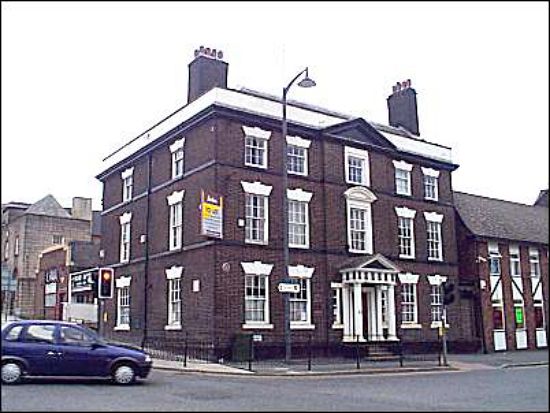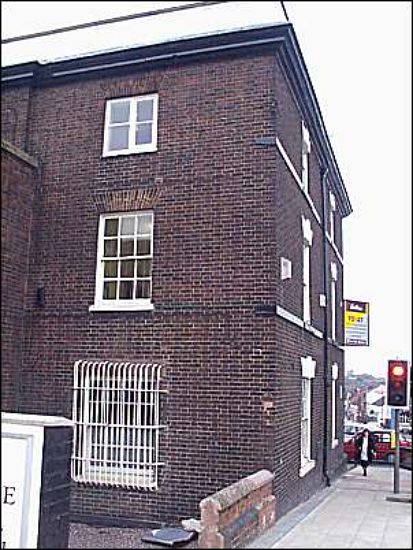Master Potters in
Georgian Burslem![]()
![]() (1714-1837)
(1714-1837)
![]()
![]()
next is the Red
Lion Inn & Hamil Road
|
Location 1 on the index map John & Thomas Wedgwood of the Big House
If Burslem can be said to have a first family then that role was fulfilled in the 18th century by the Wedgwood family. Various branches of the family occupied some of the most important estates in the town encompassing the Overhouse Estate, the Red Lion Estate and the Churchyard Estate (see the 1740 and 1832 maps). In the middle of the 18th century it was the Wedgwood's of the Red Lion Estate who made the most significant contribution to the development of the pottery industry in the area. The brothers Thomas Wedgwood (1703-76) and John Wedgwood (1705-80) took possession of their father's Potworks adjoining the Red Lion Inn in 1743. Here they conducted a series of successful experiments to improve the quality of their pottery with the result that there was a rapid increase in demand for their products.
The brothers soon found that the old factory premises were incapable of meeting their production requirements and Simeon Shaw in his History of the Staffordshire Potteries (1829) describes the reaction to their new factory and handsome Georgian house:
The Big House is illustrated at the top of this page. Its relationship to its surrounding buildings has completely changed in the last 250 years (see photos below). When it was erected it stood at the front of an extensive factory all of which since been demolished. The 1812 map shows that the factory entrance was immediately by the side of the Big House where movement to and from the works could be readily observed by the owners. The house was separated from the road by a wall which enclosed a garden on two sides of the house (see maps 1812 and 1851). Architectural ornamentation was confined to the two elevations visible to the general public. The back of the house which faced the factory was built in a much plainer style. The Big House also stood at the head of a large estate. The brothers rent book shows that between 1740 and 1767 they spent £13,000 on the acquisition of land, houses and buildings in the area. The name Wedgwood Square simply reflects the fact that the whole of the North-East side of the town was the property of the Wedgwood family either of the Big House or the Over House. Most of the land on both sides of Hamil Lane formed part of their estate. John & Thomas Wedgwood were the biggest and wealthiest property owners as well as pottery manufacturers in Burslem. They and their house, factory and estate dominated the town. |
 The Big House of John & Thomas Wedgwood built 1750 once enclosed by a garden wall and part of the large Red Lion Estate. (now in full view of Waterloo Road to
Cobridge & |
 The back of the house faced the factory and was much plainer than the front. |
|
|
![]()
![]()
next is the Red
Lion Inn & Hamil Road
Questions, comments, contributions? email: Steve Birks